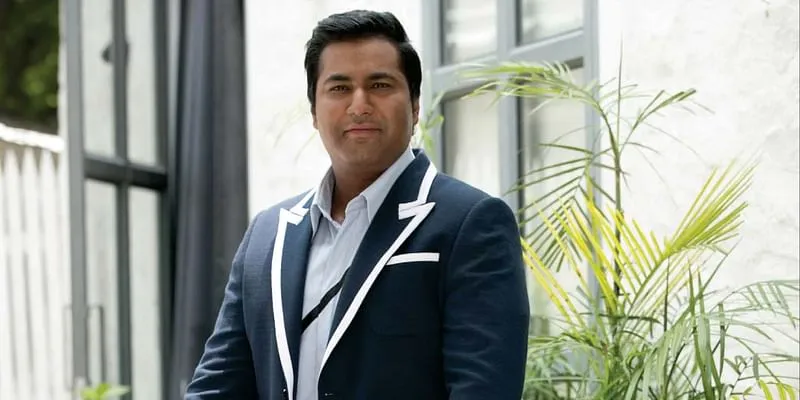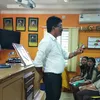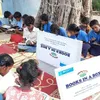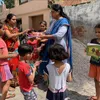How this educator is enabling learning for young children and helping artisans
Through his various initiatives and his idea of “manifestism" Ritesh Rawal has been changing the way we look at education at the school level. He is also helping artisans through his ‘Gullies of India’ initiative and showcasing their art to the world.
Until a few years ago, there weren’t too many learning opportunities for the early intervention age group (0-5 years), and the sector was completely unorganised. To reach out to this age group, Ritesh Rawal, a passionate educator based in Delhi, started Dudes & Dolls World – a cosmic school.
The school was founded in 2012 to provide young children with developmental inputs and unique methods to improve and scale their thinking capacities and was well-received by parents.
Ritesh is also renowned for his discovery of the word “manifestism”, the world’s 6th education philosophy. “What you learn through education should be manifested in your everyday lives,” Ritesh tells SocialStory.

Dudes and Dolls World, Faridabad, Haryana
After seeing the success of Dudes & Dolls, he founded Adhyay School, a K-12 school that takes education to a different level through this “manifestism”. While most school curricula focus on education that most often leads to careers in Medicine and Engineering, Adhyay focuses on familiarising the children with all kinds of careers and subjects that would be relevant to them.
While this school was available only to one section of the population since the functioning is expensive, he started the Ritesh Rawal Foundation in 2018 to expand his vision and include the underserved sectors in India.
The inspiration behind the foundation was to bring “innovation for change” in all strata of the society and taking the key ideas to the bottom of the pyramid by focusing on education and skill development.
“We saw that we were catering only to one section, and were limited in our work. We realised that a lot can be done at the primary school levels, and so we started the foundation,” Ritesh says.
So far, Ritesh has been involved in multiple ventures, including Dudes & Dolls World, Adhyay School, “Insync with Ritesh Rawal” – a recorded video discussion series with various stakeholders of the society to understand their perspective about the growth of education, and The Gullies of India by Ritesh Rawal aimed at the “manifestism” of various Indian art forms.
Learning by Doing
One of the main projects that the foundation is currently undertaking is the Learning by Doing model, where the team at the foundation created a plan to work in primary schools.
Here, they created a toolkit that equips teachers with the much-needed resources to take their classes. These kits consisted of items that help the children in the early intervention age group to understand activities practically rather than theoretically.
“While the teachers are very good at their job, most often they do not have the right equipment to impart their education, which can help the students learn by doing activities practically,” says Ritesh.
For example, kids in the 0-5 years age group in the rural areas may not be able to relate to an aircraft since they don’t always fly over their skies. On the other hand, a model aircraft can help them understand what it is all about.

Ritesh Rawal
The same thing goes for other subjects like sports – while they may have an idea of what a basketball could be about, taking a look at the actual game or the equipment can help them learn better.
“Through our kits, the teachers can create a variety in terms of their teaching technique. This, in turn, helps students understand concepts better,” he adds.
The model was implemented in 2018 but the team had to halt it in 2020 since it required children and school staff to be physically present. Ritesh says that they will continue it post COVID-19, whenever the schools open.
They have reached about 3,000 students in Rajasthan and Haryana by 2020. While they were supposed to start in Uttarakhand, they are waiting for the pandemic to subside.

Kits distributed to the primary school children.
Gullies of India
To create a sustainable livelihood programme based on crafts and skills, the foundation initiated a research project called “Gullies of India”. “Gullies of India is a project through which we identify the arts and craft hidden in the ‘gullies’ of India and showcase them to the world,” says Ritesh.
In the first phase of their research, the team has been identifying the various artforms and document their process at the ground level for over two years. In the second phase, they are going to expand it further, and make these art forms available to the worldwide demographic.
“We were focusing on research and creating models in a limited geographical area so that we could scale up and sustain the expansion. We started our work in Haryana, and scaled up to Rajasthan and Uttarakhand,” says Ritesh.
Some of the arts that have been identified so far are blue pottery from Jaipur and the work in Ceramic Town in Uttar Pradesh. They are planning to go to Moradabad for their next pursuit to study brass in the coming weeks.

Gullies of India - pottery work
The foundation reached out to approximately 5,000 people physically in the process of creating awareness and implementation of both, Project ‘Learning by Doing’ and Project ‘Gullies of India’.
The foundation has an in-house project team that includes field workers and researchers for implementation and execution purposes. It also identified local NGOs to build its capacity so that it can focus on creating models and scaling them up by reaching out to more people.
“So far, the costs involved have been managed through our limited resources and we have not received any external funds for the same. The fees from the school are being utilised for our operations,” he shares.
The pandemic and its challenges
“The pandemic has impacted our work in a big way because since we are focused on education and skills, and the pandemic has presented major restrictions in this field. Moreover, we don’t want to do it online just to fulfil the requirement,” says Ritesh.
While the pandemic has been raging on, Ritesh says that the biggest challenge is to stay motivated. “Knowing well that we have chosen a sector in which you can’t change things overnight and changes will be visible in the long term, being persistent and staying motivated in our approach is the biggest challenge in itself,” he explains.
On the road ahead, the foundation plans to take forward the projects to a bigger level, and expand the reach of this artwork to more people, and create awareness. Once the pandemic cools down, it will take its education initiatives forward as well.
Edited by Kanishk Singh









